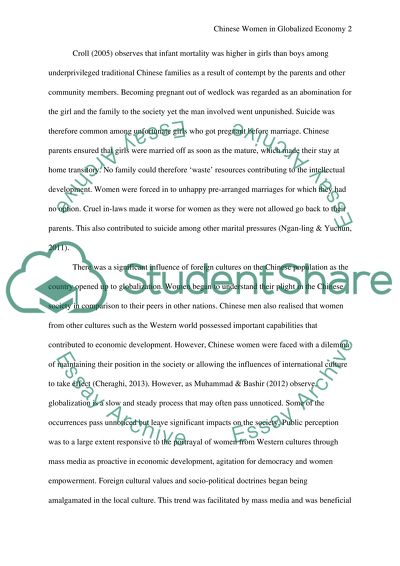Cite this document
(“Chinese women in globalized economy( Chinese women in marriage, family Assignment”, n.d.)
Chinese women in globalized economy( Chinese women in marriage, family Assignment. Retrieved from https://studentshare.org/gender-sexual-studies/1642840-chinese-women-in-globalized-economy-chinese-women-in-marriage-family-planning-and-family-responsibilities
Chinese women in globalized economy( Chinese women in marriage, family Assignment. Retrieved from https://studentshare.org/gender-sexual-studies/1642840-chinese-women-in-globalized-economy-chinese-women-in-marriage-family-planning-and-family-responsibilities
(Chinese Women in Globalized Economy( Chinese Women in Marriage, Family Assignment)
Chinese Women in Globalized Economy( Chinese Women in Marriage, Family Assignment. https://studentshare.org/gender-sexual-studies/1642840-chinese-women-in-globalized-economy-chinese-women-in-marriage-family-planning-and-family-responsibilities.
Chinese Women in Globalized Economy( Chinese Women in Marriage, Family Assignment. https://studentshare.org/gender-sexual-studies/1642840-chinese-women-in-globalized-economy-chinese-women-in-marriage-family-planning-and-family-responsibilities.
“Chinese Women in Globalized Economy( Chinese Women in Marriage, Family Assignment”, n.d. https://studentshare.org/gender-sexual-studies/1642840-chinese-women-in-globalized-economy-chinese-women-in-marriage-family-planning-and-family-responsibilities.


